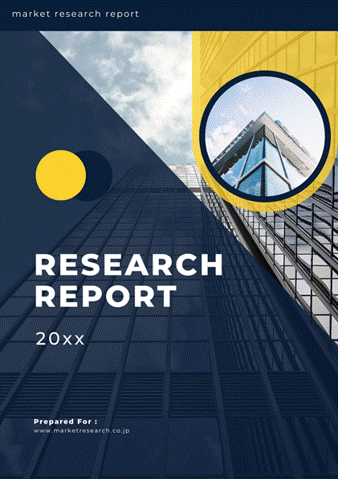 | • レポートコード:C-MOR-100112 • 出版社/出版日:Mordor Intelligence / 2019年9月 • レポート形態:英文、PDF、151ページ • 納品方法:Eメール(受注後2-3営業日) • 産業分類:化学 |
| Single User | ¥629,000 (USD4,250) | ▷ お問い合わせ |
| Multi User | ¥703,000 (USD4,750) | ▷ お問い合わせ |
| Site License | ¥888,000 (USD6,000) | ▷ お問い合わせ |
• お支払方法:銀行振込(納品後、ご請求書送付)
レポート概要
| 本調査レポートでは、アクリロニトリルの世界市場について調査・分析し、アクリロニトリルの世界市場規模、市場動向、市場環境分析、市場展望、セグメント別分析、地域別分析、関連企業情報など以下の構成でお届け致します。 |
Market Overview
The acrylonitrile market is expected to register a CAGR of over 3% during the forecast period (2019-2024). One of the major factors driving the market studied is the increasing demand for acrylonitrile butadiene styrene (ABS) in the automotive and construction industries. Competition from low-priced polyester fibers in the textile industry is expected to significantly hinder the growth of the market studied.
Asia-Pacific is expected to dominate the global market, during the forecast period.
Budding wastewater treatment applications are likely to act as an opportunity in the future.
Key Market Trends
Rising Demand from Acrylonitrile Butadiene Styrene (ABS) Application
Acrylonitrile butadiene styrene (ABS) is a thermoplastic that provides a diverse combination of properties, like resistance to chemicals, heat, and impact.
The consumption rate of ABS resins is increasing in the consumer appliances segment, the largest end-user segment, which accounts for about 40% of the global ABS resin consumption.
The second-largest end-user is the electrical and electronics industry, which accounts for approximately 25% of the overall consumption.
The automotive industry accounts for about 12% of the global ABS resin consumption.
Due to its superior properties, such as strength and durability at low temperatures, it is widely used in the automotive and electronics industries.
Moreover, as ABS is lightweight in nature, its demand runs parallel to the demand for lightweight automobile.
Additionally, growing developments in 3D printing, around the world, are also projected to increase the scope of application for ABS, in the near future.
China to Dominate the Demand in the Asia-Pacific Region
In the recent years, China has become a global industrial and manufacturing hub. The increase in the manufacturing of electrical and electronics appliances in China, over the years, has resulted in increased demand for acrylonitrile in the country.
The Chinese market is expected to witness faster growth, in comparison to other countries, owing to the significant increase in the per-capita income of the middle-class population, and the resultant increase in the sales of consumer goods in the region.
The appliance market in China is likely to continue to grow as the middle-class population grows, since this group purchases more consumer durable electronic goods that use ABS resins.
China is the global leader in the electric car market. The Chinese government is providing strong financial and non-financial incentives, to boost the electric cars sales.
Furthermore, countries, such as India and Japan, have also been contributing to the growth of the market studied. This is expected to further drive the demand for the acrylonitrile market, over the forecast period.
Competitive Landscape
The acrylonitrile market is partially fragmented in nature. Some of the major players of the market studied include AnQore (DSM Acrylonitrile), INEOS, Lukoil, and Mitsubishi Chemical Corporation, among others.
Reasons to Purchase this report:
The market estimate (ME) sheet in Excel format
Report customization as per the client’s requirements
3 months of analyst support
1 INTRODUCTION
1.1 Study Deliverables
1.2 Study Assumptions
1.3 Scope of the Study
2 RESEARCH METHODOLOGY
3 EXECUTIVE SUMMARY
4 MARKET DYNAMICS
4.1 Drivers
4.1.1 Increasing Demand for Acrylonitrile Butadiene Styrene (ABS) in the Automotive and Construction Industries
4.1.2 Increasing Applications in Electronics and Consumer Appliances
4.2 Restraints
4.2.1 Competition from Low-priced Polyester Fibers in the Textile Industry
4.2.2 Other Restraints
4.3 Industry Value Chain Analysis
4.4 Porters Five Forces Analysis
4.4.1 Bargaining Power of Suppliers
4.4.2 Bargaining Power of Consumers
4.4.3 Threat of New Entrants
4.4.4 Threat of Substitute Products and Services
4.4.5 Degree of Competition
4.5 Technological Snapshot
4.6 Feedstock Analysis
4.7 Trade Analysis
4.8 Price Trends
4.9 Production Analysis (Capacity of Major Producers)
4.10 Regulatory Policy Analysis
5 MARKET SEGMENTATION
5.1 Application
5.1.1 Acrylic Fiber
5.1.2 Acrylonitrile Butadiene Styrene (ABS)
5.1.3 Polyacrylamide (PAM)
5.1.4 Nitrile Butadiene Rubber(NBR)
5.1.5 Other Applications
5.2 Geography
5.2.1 Asia-Pacific
5.2.1.1 China
5.2.1.2 India
5.2.1.3 Japan
5.2.1.4 South Korea
5.2.1.5 Rest of Asia-Pacific
5.2.2 North America
5.2.2.1 United States
5.2.2.2 Canada
5.2.2.3 Mexico
5.2.3 Europe
5.2.3.1 Germany
5.2.3.2 United Kingdom
5.2.3.3 France
5.2.3.4 Italy
5.2.3.5 Rest of Europe
5.2.4 South America
5.2.4.1 Brazil
5.2.4.2 Argentina
5.2.4.3 Rest of South America
5.2.5 Middle East & Africa
5.2.5.1 Saudi Arabia
5.2.5.2 South Africa
5.2.5.3 Rest of Middle East & Africa
6 COMPETITIVE LANDSCAPE
6.1 Mergers and Acquisitions, Joint Ventures, Collaborations, and Agreements
6.2 Market Share Analysis**
6.3 Strategies Adopted by Leading Players
6.4 Company Profiles
6.4.1 Asahi Kasei Corporation
6.4.2 AnQore (DSM Acrylonitrile BV)
6.4.3 Ascend Performance Materials
6.4.4 Ineos
6.4.5 Lukoil
6.4.6 Mitsubishi Chemical Corporation
6.4.7 Petkim Petrokimya Holding AS
6.4.8 Polymir
6.4.9 Reliance Industries Limited
6.4.10 Shanghai SECCO Petrochemical Company
6.4.11 Sumitomo Chemical Co. Ltd
6.4.12 Taekwang Industrial Co. Ltd
7 MARKET OPPORTUNITIES AND FUTURE TRENDS
7.1 Budding Wastewater Treatment Applications
7.2 Recovering Oil and Gas Production Activities